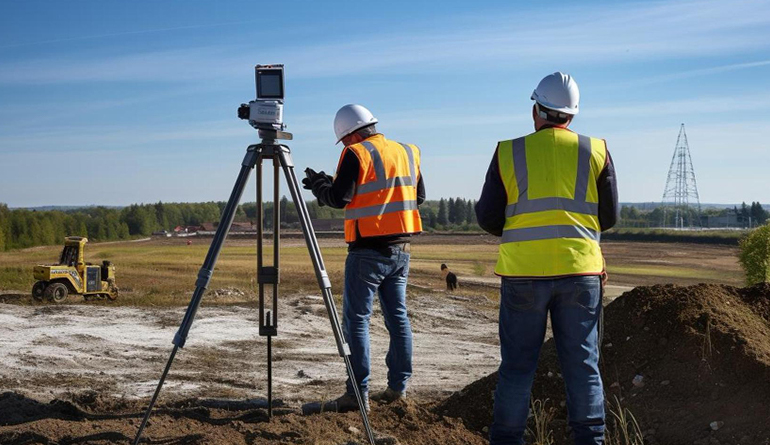
Topographic Survey
A topographic survey is a detailed survey that maps the natural and man-made features of a particular area, including its terrain, elevations, contours, and other physical characteristics. The primary purpose of a topographic survey is to create an accurate representation of the existing surface conditions of the land, which is essential for various engineering, construction, and land development projects.
Here’s an overview of the key aspects of a topographic survey:
1. Field Work: Surveyors conduct fieldwork using specialized equipment such as total stations, GPS receivers, and laser scanners to collect precise measurements of the terrain and other features. They systematically survey the area, taking measurements at regular intervals to capture the shape and elevation of the land surface.
2. Elevation Data: One of the most critical aspects of a topographic survey is capturing elevation data. Surveyors use various methods, including differential leveling and GPS, to measure the height of the land at different points. This data is used to create contour lines, which represent changes in elevation and help visualize the terrain’s slope and shape.
3. Feature Identification: Surveyors identify and map various natural and man-made features within the survey area, such as trees, vegetation, bodies of water, buildings, roads, and utilities. These features are often represented as symbols or annotations on the topographic map.
4. Contour Mapping: Contour lines are created based on the elevation data collected during the survey. Contours are lines that connect points of equal elevation, and they provide a detailed representation of the land’s surface morphology. By analyzing contour lines, engineers and planners can assess slope, drainage patterns, and other factors relevant to their projects.
5. Data Processing: Once field data collection is complete, surveyors process the raw survey data using specialized software to generate a digital terrain model (DTM) or digital elevation model (DEM). These digital models provide a three-dimensional representation of the land surface, which can be used for analysis, visualization, and design purposes.
6. Mapping and Reporting: The final output of a topographic survey is typically a topographic map or plan that accurately depicts the surveyed area’s surface features, elevations, and contours. This map serves as a valuable reference for engineers, architects, land planners, and other professionals involved in projects that require a thorough understanding of the terrain.
Topographic surveys are essential for a wide range of applications, including site development, infrastructure design, floodplain mapping, environmental assessment, and land-use planning. They provide crucial information about the physical characteristics of the land, helping to ensure that development projects are designed and implemented effectively while minimizing risks and environmental impacts.

